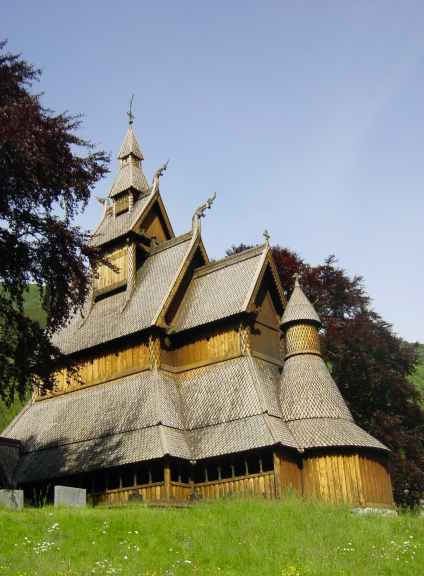Stavekirken
Some of the most remarkable edifices surviving from medieval Norway are the stave churches scattered across the countryside. When the Catholic faith was introduced to the country in the 10th and 11th centuries, these wooden churches were built to house Our Lord and hold the Mass. The stave churches in Norway today do not date from that early, but rather from the 12th century onward, when sills were introduced in which the staves (the poles supporting the roof) were embedded. This protected the base of the staves and walls from rotting in the earth. In Norway, there were more churches built of wood than of stone, and from more than a thousand originally built, only twenty-eight stave churches have been preserved.

Borgund Stave Church
A stave curch consists of a sill, staves--which are the vertical, load-bearing timbers--and a top sill, which has grooves that hold the wall planks. The staves rise from deeply dug holes in the ground to bear the weight of the high roofs.

Ringebu Stave Church, c.1220, one of the largest in Norway

Eidsborg Stave Church

Stave church interior (replica)

Fantoft Stave Church

Borgund Stave Church
A stave curch consists of a sill, staves--which are the vertical, load-bearing timbers--and a top sill, which has grooves that hold the wall planks. The staves rise from deeply dug holes in the ground to bear the weight of the high roofs.

Ringebu Stave Church, c.1220, one of the largest in Norway

Eidsborg Stave Church

Stave church interior (replica)

Fantoft Stave Church

<< Home